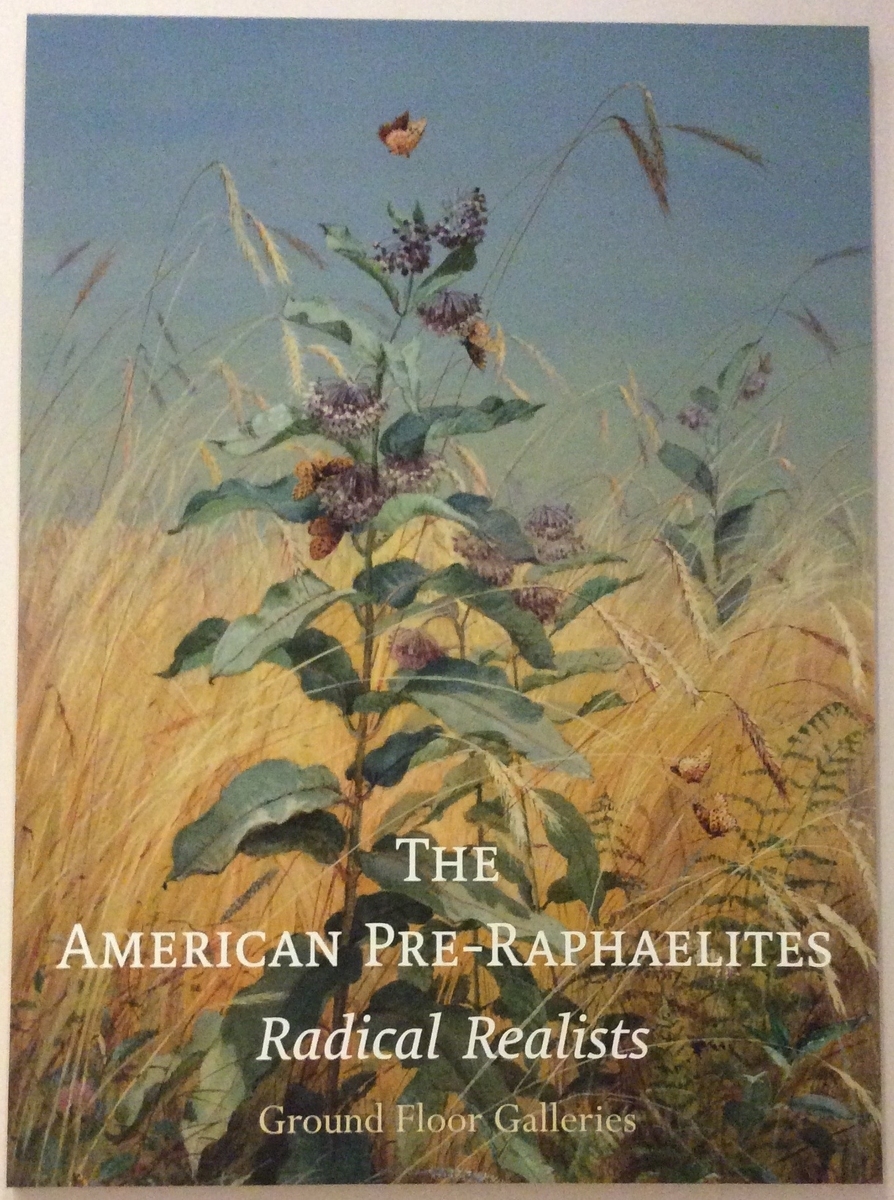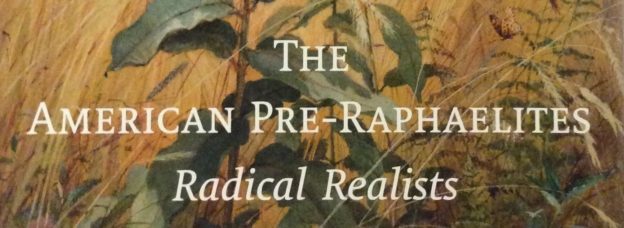The National Gallery of Art’s current exhibition The American Pre-Raphaelites: Radical Realists provides an opportunity to view many watercolors, paintings, and drawings that engage with the plant world.
The exhibition takes the writings of the art critic John Ruskin and the aesthetics of the British Pre-Raphaelites as a point of departure for examining works by artists associated with the American Pre-Raphaelite group. These artists, active in the U.S. in the 1860s and 1870s, embraced nature, domestic interiors, and landscapes as their preferred subject matter.
A highlight of the show is the work of the woman artist Fidelia Bridges, who specialized in depicting wild flowers as still lifes and within their native ecologies. Bridges trained at the Pennsylvania Academy of the Fine Arts, and she received recognition for her art during her lifetime. Her assured brushwork and careful attention to the botanical accuracy of specific plants is evidenced by Pink Roses, Milkweeds, and Calla Lily. Bridges departed from these themes in her tranquil scene of domestic life Laura Brown in a Wingchair. The painting portrays a young girl whom Bridges cared for in her role as governess. The girl sits near a window in which hanging and potted plants thrive, recalling the popular gendered leisure pursuit of domestic gardening.
The exhibition also includes paintings by Bridges’ teacher William Trost Richards. Not to be missed are Richards’ representations of lush indoor and outdoor gardens. A gallery label interprets the arched format of The Conservatory as a reference to the fashion for growing plants in terrariums. The small size of The Conservatory promotes an intimate encounter with frondescent flora ranging from ferns to poinsettias to (perhaps) a brilliant red palm lily (cordyline fruticosa) and begonia leaves with silver speckles and magenta centers.
The exhibition runs until July 21, 2019. It is no accident that Bridges’ Milkweed serves as the promotional image for the show.

